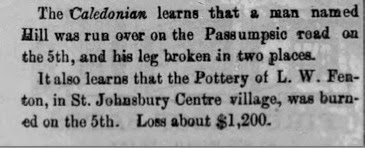 |
| Check out these early provincial boundaries, via a Creative Commons map created by Kmusser. |
I'm about halfway through writing KINDRED HEARTS, and every surface around me is covered with research. Not very tidy, but how exhilarating!
At this stage, also, almost everything around me spurs fresh inquiry ...
Neighbors up the road just took their daughters to visit Salem, Massachusetts, and that sent me to reviewing the Salem Witch Trials and the notorious role of Cotton Mather (1663-1728) in them.
In turn, that sent me to Wikipedia for a quick review -- I often find Wikipedia to be a great jumping-off site for research, loaded with footnotes. I don't take the view of the Wiki writer as necessarily "valid" but I find a lot to explore from, after looking at this, from https://en.wikipedia.org/wiki/Cotton_Mather—and the last paragraph made me very sad:
Mather was born in Boston, Massachusetts Bay Colony, the son of Maria (née Cotton) and Increase Mather, and grandson of both John Cotton and Richard Mather, all also prominent Puritan ministers. Mather was named after his maternal grandfather John Cotton. He attended Boston Latin School, where his name was posthumously added to its Hall of Fame, and graduated from Harvard in 1678 at age 15. After completing his post-graduate work, he joined his father as assistant pastor of Boston's original North Church (not to be confused with the Anglican/Episcopal Old North Church of Paul Revere fame). In 1685, Mather assumed full responsibilities as pastor of the church.[1]: 8
Mather wrote more than 450 books and pamphlets, and his ubiquitous literary works made him one of the most influential religious leaders in America. He set the moral tone in the colonies and sounded the call for second- and third-generation Puritans, whose parents had left England for the New England colonies, to return to the theological roots of Puritanism. The most important of these was Magnalia Christi Americana (1702) which comprises seven distinct books, many of which depict biographical and historical narratives.[3]
Mather influenced early American science. In 1716, he conducted one of the first recorded experiments with plant hybridization based on his observations of corn varieties. This observation was memorialized in a letter to his friend James Petiver:[4]
First: my Friend planted a Row of Indian corn that was Coloured Red and Blue; the rest of the Field being planted with corn of the yellow, which is the most usual color. To the Windward side, this Red and Blue Row, so infected Three or Four whole Rows, as to communicate the same Colour unto them; and part of ye Fifth and some of ye Sixth. But to the Leeward Side, no less than Seven or Eight Rows, had ye same Colour communicated unto them; and some small Impressions were made on those that were yet further off.[5]
In November 1713, Mather's wife, newborn twins, and two-year-old daughter all succumbed during a measles epidemic.[6] He was twice widowed, and only two of his 15 children survived him; he died on the day after his 65th birthday and was buried on Copp's Hill, near Old North Church.[1]: 40






